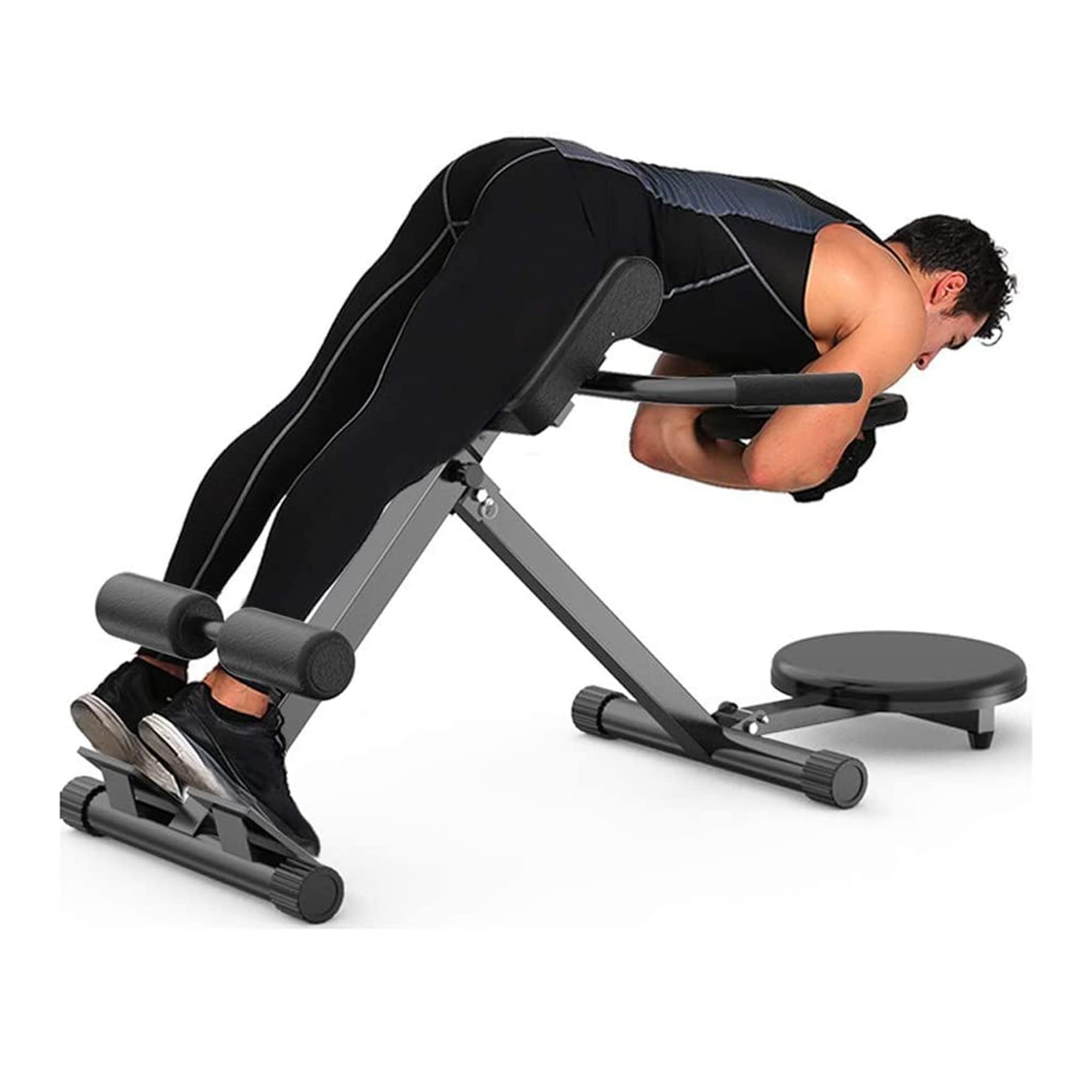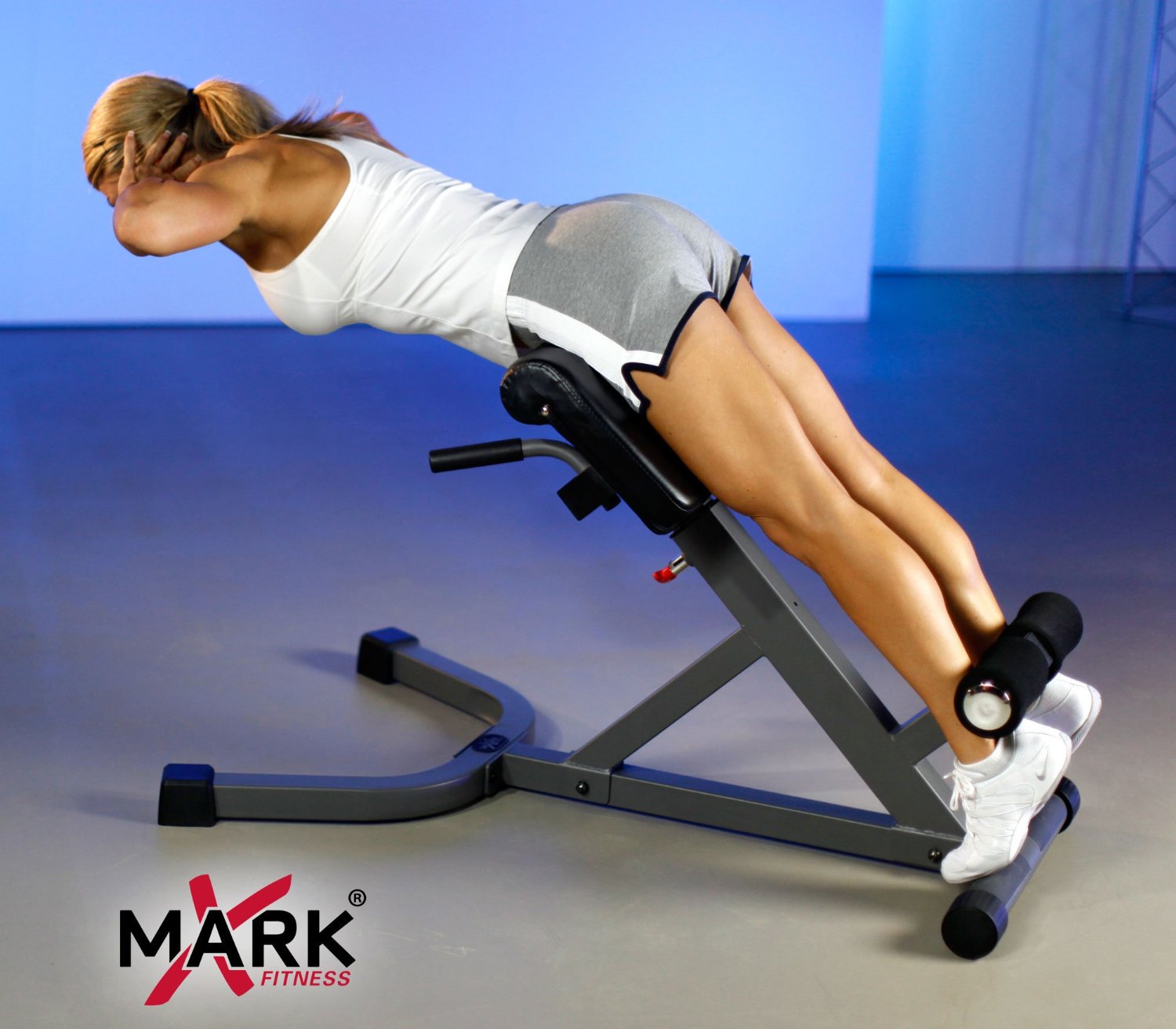Understanding Roman Chairs and Lower Back Pain

The Roman chair, a specialized exercise equipment, has gained popularity as a potential solution for alleviating lower back pain. This article delves into the mechanics of how a Roman chair works, its potential benefits for lower back pain, and the types of lower back pain it may help alleviate.
Roman Chair Mechanics and Benefits, Roman chair for lower back pain
The Roman chair is designed to target the muscles of the lower back, primarily the erector spinae, which are responsible for extending and rotating the spine. It works by placing the user in an inverted position, with their hips supported and their upper body hanging down. This position challenges the lower back muscles to maintain stability and control, thereby strengthening them.
The primary benefit of using a Roman chair for lower back pain is its ability to strengthen the muscles that support the spine. These muscles act as a natural corset, providing stability and preventing excessive strain on the lower back. By strengthening these muscles, a Roman chair can help alleviate pain caused by muscle weakness, imbalances, or poor posture.
Types of Lower Back Pain Alleviated by Roman Chair
A Roman chair may help alleviate various types of lower back pain, including:
* Muscle strain or sprains: These are common causes of lower back pain, often resulting from overuse, improper lifting techniques, or sudden movements. Strengthening the back muscles can help prevent these injuries and promote healing.
* Poor posture: Prolonged sitting or standing in poor posture can put excessive strain on the lower back, leading to pain and discomfort. Strengthening the back muscles can help improve posture and reduce strain on the spine.
* Herniated discs: While a Roman chair cannot cure a herniated disc, it can help strengthen the surrounding muscles, providing support and reducing pain.
* Degenerative disc disease: This condition occurs when the discs in the spine deteriorate, leading to pain and stiffness. Strengthening the back muscles can help improve stability and reduce pain associated with degenerative disc disease.
Causes of Lower Back Pain and How Roman Chair Addresses Them
Lower back pain can be caused by a variety of factors, including:
* Muscle imbalances: Weakness or tightness in the back muscles can contribute to lower back pain. The Roman chair can help address this by strengthening the erector spinae and other supporting muscles.
* Poor core strength: A weak core can lead to instability in the spine, increasing the risk of lower back pain. Roman chair exercises can help strengthen the core muscles, improving stability and reducing pain.
* Overuse or repetitive strain: Certain activities, such as prolonged sitting or heavy lifting, can put excessive strain on the lower back, leading to pain. Strengthening the back muscles can help prevent and alleviate pain caused by overuse.
It is important to note that a Roman chair is not a cure-all for lower back pain. If you are experiencing persistent or severe lower back pain, it is crucial to consult a healthcare professional to determine the underlying cause and receive appropriate treatment.
Roman Chair Exercises for Lower Back Pain: Roman Chair For Lower Back Pain

Roman chair for lower back pain – Strengthening and stabilizing the muscles in your lower back is crucial for managing and preventing lower back pain. Roman chair exercises can be particularly beneficial as they engage the core muscles, including the erector spinae, glutes, and hamstrings, which play a vital role in supporting your spine.
Roman Chair Exercise Routine for Lower Back Pain
This routine incorporates a series of exercises designed to target different aspects of lower back strength and stability. It’s essential to start slowly and gradually increase the intensity and duration as your strength improves. Consult with a healthcare professional before starting any new exercise program, especially if you have existing injuries or conditions.
Warm-up
Before starting the exercises, a warm-up is essential to prepare your muscles for activity and reduce the risk of injury. Here are some warm-up exercises you can do:
- Light cardio: Walking or jogging in place for 5-10 minutes.
- Dynamic stretching: Cat-cow stretches, hip circles, and arm circles for 5-10 repetitions each.
Exercise 1: Roman Chair Hip Extension
This exercise targets the glutes and hamstrings, which play a crucial role in supporting the lower back.
- Starting position: Sit on the Roman chair with your feet securely strapped in. Lean forward at a 90-degree angle, maintaining a straight back.
- Execution: Slowly extend your hips upward, keeping your back straight. Pause at the top for a second, then slowly lower back to the starting position.
- Repetitions: 10-15 repetitions for 2-3 sets.
- Benefits: This exercise helps strengthen the glutes and hamstrings, which are essential for supporting the lower back and reducing strain on the spine.
Exercise 2: Roman Chair Knee Drive
This exercise engages the core muscles, including the erector spinae, which are crucial for maintaining spinal stability.
- Starting position: Sit on the Roman chair with your feet securely strapped in. Lean forward at a 90-degree angle, maintaining a straight back.
- Execution: Keeping your back straight, bring your knees up towards your chest. Hold for a second, then slowly lower back to the starting position.
- Repetitions: 10-15 repetitions for 2-3 sets.
- Benefits: This exercise strengthens the erector spinae muscles, which are responsible for supporting the spine and preventing lower back pain.
Exercise 3: Roman Chair Back Extension
This exercise targets the erector spinae muscles, which play a crucial role in supporting the spine and preventing lower back pain.
- Starting position: Sit on the Roman chair with your feet securely strapped in. Lean forward at a 90-degree angle, maintaining a straight back.
- Execution: Slowly extend your back backward, keeping your core engaged. Hold for a second, then slowly lower back to the starting position.
- Repetitions: 10-15 repetitions for 2-3 sets.
- Benefits: This exercise helps strengthen the erector spinae muscles, which are essential for supporting the spine and reducing strain on the lower back.
Cool-down
After completing the exercises, it’s essential to cool down to help your muscles recover and prevent stiffness. Here are some cool-down exercises you can do:
- Static stretching: Hold each stretch for 30 seconds, such as hamstring stretches, quad stretches, and calf stretches.
- Light cardio: Walking slowly for 5-10 minutes.
A Roman chair can be a valuable tool for strengthening the lower back, which can be crucial for alleviating pain. But it’s important to use it correctly to avoid further injury. This reminds me of the poignant down the back of the chair poem , where the chair itself becomes a symbol of memory and forgotten moments.
Much like the poem explores the past, a Roman chair can help you reclaim your physical well-being and rediscover a pain-free life.
Roman chairs, with their adjustable backrests, can be a valuable tool for managing lower back pain by providing targeted support and stretching. While a Roman chair offers a specific type of support, a chair without arms or back might be a better choice for those seeking more flexibility in posture and movement.
This type of chair can encourage core engagement and better posture, potentially reducing strain on the lower back over time.